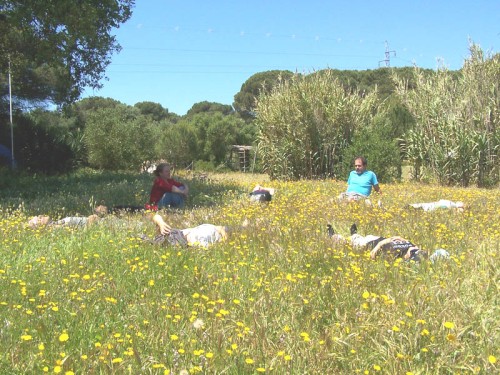“… the basic grammar and syntax of rock art respond to universal patterns of cognition, logic and communication. Rock art appears as the expression of a primordial language, with different dialects, and can be read disregading the language in which one thinks and communicates. It takes us back to a universal pictographic proto-script, once deciphered, can be read and understood in any spoken language. To reactivate the use of a method of pictographic and ideographic writing which can be read in any language would open up a new horizon for human communication and may appear as a sort of utopia. ” Emanuel Anati, Rock Art, the Primordial Language.
The word Syntax originates from the Greek words uυν meaning “together” and taxis meaning “sequence, order, arrangement”.
Syntax refers to word order and sentence structure. In the English language the normal syntax used is subject – verb – object. In Literature and poetry, the order of the words, or syntax can be changed around for an artistic effect, or to emphasise a meaning. Thus words become the raw material to sculpt new meaning, express new vistas that cannot usually be expressed using the correct grammatical order.
Rock art seems to have a metaphorical associative syntax, one that speaks directly to the primordial mind. Research into rock art reveals various types of symbols that when ‘read’ together form a sentence-like sequence.
In his book, Rock Art – The Primordial Language, Emanuel Anati defines three types of symbols found on rock faces:
Pictograms – often the Subject part of the sentence, are identifiable forms of real or imaginary objects. Anthropomorphic. Zoomorphic. Implements. Topographic elements.
Ideograms are considered the verbs and adjectives – repetitive signs like zoomorphic or anthropomorphic schemes sticks phalic and vulval signs discs dots etc. The three main types of ideograms are: anatomic such as vulvas hands etc, conceptual such as discs or crosses and numerical groups of dots or lines. For example dots seem to depict a verb of action like to do – when it appears near the foot of a person it means to go, when it appears near a penis or vulva it means to have sex, and near a bow and arrow to shoot.
Psychograms are signs that are not recognisable and do not seem to represent objects or symbols. They appear to be the conceptual exclamation marks. Psychograms are more abstract ‘working at a subconscious level as do certain archetypal signs that our conscious memory is no longer able to define but which deep within the self release associative and sensory processes on wavelengths that escape the band of ordinary transmission. They are remarkable for their immediacy.'(Anati).
Pondering over examples of archaic syntax on rock faces here in Andalucia, makes me curious about the state of consciousness the ancient ones lived in. It seems obvious they were in deep connection with their surroundings, and in magical conversation with nature for their livelihood. What were they saying? Are their messages relevant to us today? Can we, with our own language structures, decipher and learn something about the evolution of consciousness from the study of Rock art? I will be exploring some of these themes next week in my talk about La Janda (Thursday 13th March – 7:30 pm, Steiner House, Park Road, London.)



